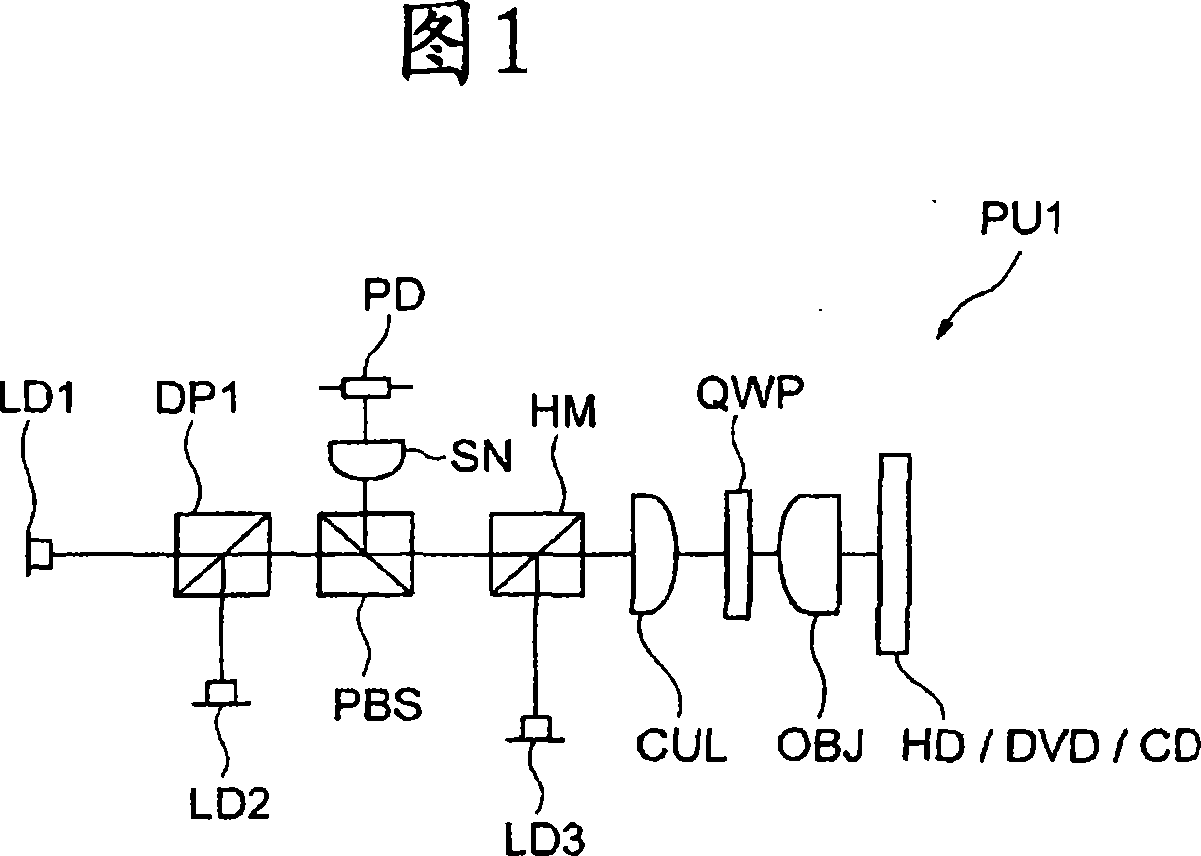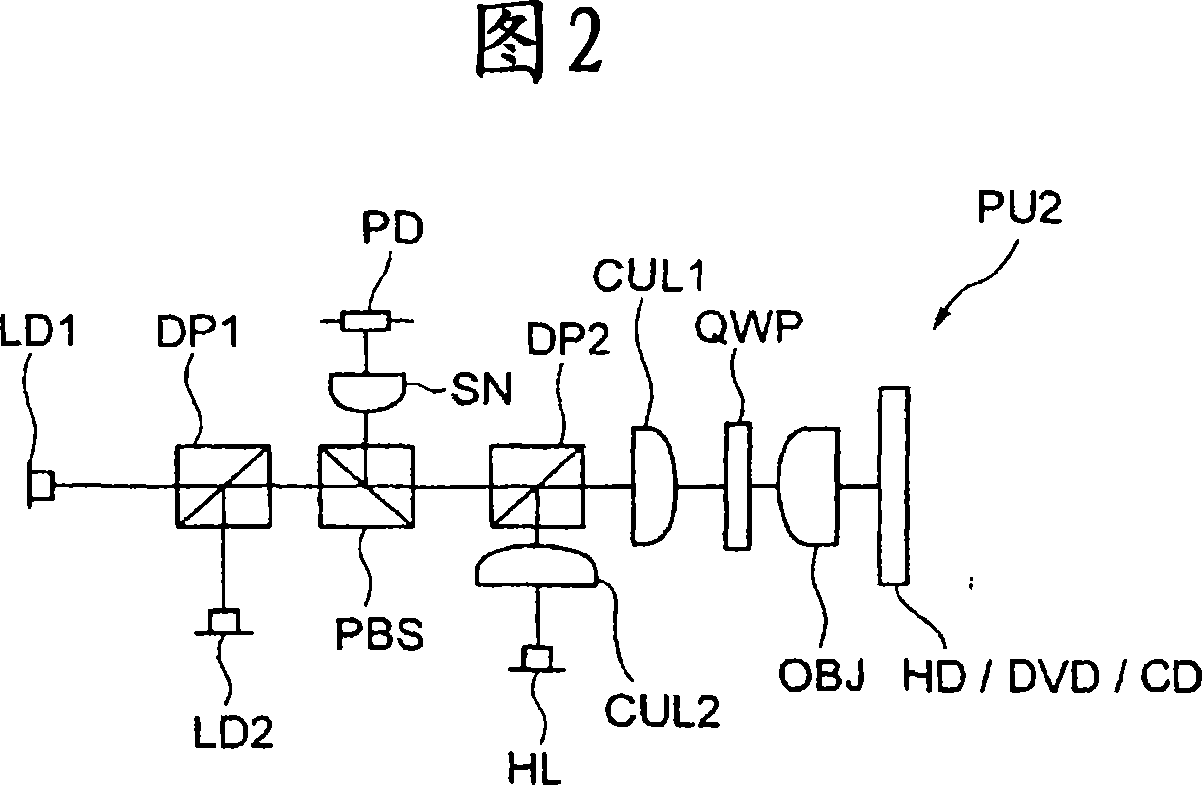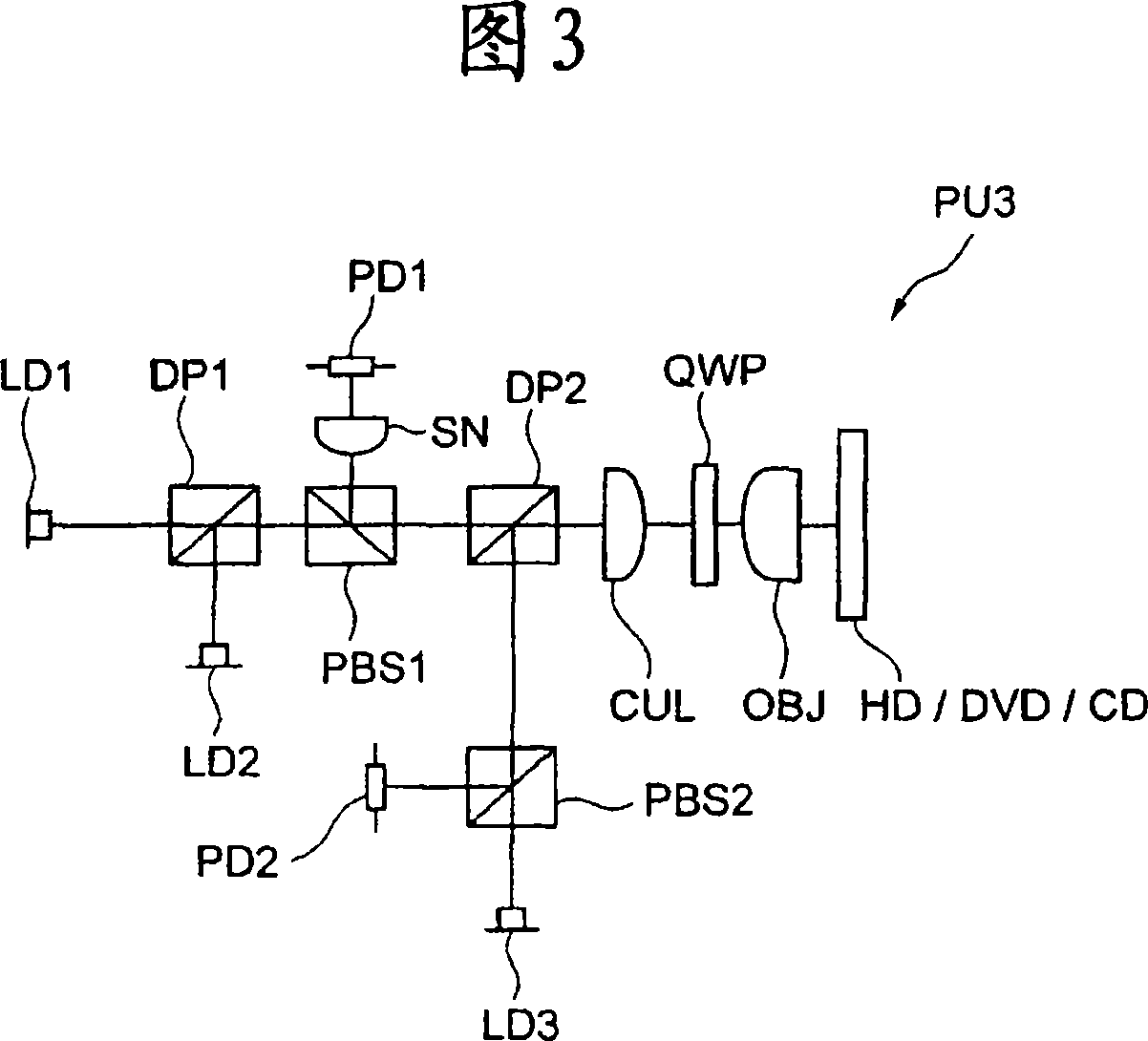Optical pickup apparatus and optical information recording and/or reproducing apparatus
一种光拾取装置、记录介质的技术,应用在用光学方法记录/重现、光学记录头、光束引导装置等方向,能够解决增加光学系统制造工艺、光拾取装置大型化成本增大等问题
- Summary
- Abstract
- Description
- Claims
- Application Information
AI Technical Summary
Problems solved by technology
Method used
Image
Examples
Embodiment 1
[0257] Table 1 shows the lens data of Example 1. Example 1 uses an objective optical element with a focal length of 3.1 mm for a beam of wavelength λ1, and is designed so that the magnification Mt of the entire optical system is 9 times. The photodetector can use the same device configuration for beams of wavelength λ1 and λ2. In this case, m1 (the magnification of the objective optical element) is 0.09, which can sufficiently allow deterioration of the spherical aberration when the temperature changes. M1 is 0.965.
[0258] [Table 1]
[0259] Example 1 lens data
[0260] (objective lens)
[0261] focal length f 1 =3.1mmf 2 =3.25mm f 3 =3.22mm
[0262] Numerical aperture on the image side NA1: 0.65 NA2: 0.65 NA3: 0.5
[0263] Dihedral Diffraction Number dor: 2 dor: 1 dor: 1
[0264] side i
ri
di (407nm)
ni (407nm)
di (655nm)
ni (655nm)
di (785nm)
ni (785nm)
1
∞
0.250
0.250
0.250
...
Embodiment 2
[0294] Table 2 shows the lens data of Example 2. Example 2 uses an objective optical element with a focal length of 3.1 mm for a beam of wavelength λ1, and is designed such that the overall magnification Mt of the optical system is 8 times. For beams of wavelength λ1 and λ2, the photodetector can use the same device configuration. At this time, m1 (the magnification of the objective lens optical element) is 0.03, which can fully allow the deterioration of the spherical aberration when the temperature changes, and the spherical aberration when the temperature changes Aberration deterioration is 0.051λrms. If the magnification m1 is smaller than 0.01, the deterioration of spherical aberration at the time of temperature change will further increase, and since it is difficult to suppress the deterioration of spherical aberration in the entire optical pickup to 0.07λrms, m1≥0.01 is preferable. M1 = 0.863.
[0295] [Table 2]
[0296] Example 2 lens data
[0297] (objective lens)...
Embodiment 3
[0332]Table 3 shows the lens data of Example 3. Example 3 uses an objective optical element with a focal length of 1.6 mm for a beam of wavelength λ1, and is designed such that the magnification Mt of the entire optical system is 8 times. For light beams of wavelength λ1 and λ2, the photodetector can use the configuration of the same device. At this time, m1 (magnification of the objective lens optical element) is 0.05, and the working distance when recording and reproducing with light of wavelength λ1 is 0.51mm. When the magnification m1 exceeds 0.08, the working distance of the light beam with the wavelength λ1 is shorter than 0.4 mm. Since the optical disc and the objective optical element may interfere with each other, it is preferable that m1≤0.08. M1 = 0.901.
[0333] [table 3]
[0334] Embodiment 3 lens data
[0335] (objective lens)
[0336] focal length f 1 =1.60mm f 2 =1.67mm f 3 =1.66mm
[0337] Numerical aperture on the image side NA1: 0.65 NA2: 0.65 NA3: 0...
PUM
| Property | Measurement | Unit |
|---|---|---|
| length | aaaaa | aaaaa |
| wavelength | aaaaa | aaaaa |
| length | aaaaa | aaaaa |
Abstract
Description
Claims
Application Information
 Login to View More
Login to View More - R&D
- Intellectual Property
- Life Sciences
- Materials
- Tech Scout
- Unparalleled Data Quality
- Higher Quality Content
- 60% Fewer Hallucinations
Browse by: Latest US Patents, China's latest patents, Technical Efficacy Thesaurus, Application Domain, Technology Topic, Popular Technical Reports.
© 2025 PatSnap. All rights reserved.Legal|Privacy policy|Modern Slavery Act Transparency Statement|Sitemap|About US| Contact US: help@patsnap.com



